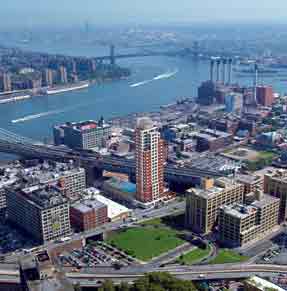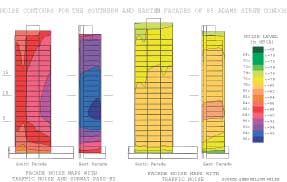The Art and Science of Peace and Quiet
Silence is golden
It should come as no surprise that good building sites in dense urban areas are becoming harder to find. Since development must continue, developers must now consider less desirable sites, such as under flight patterns, next to freeways, and over train tracks. If the site is buildable and the location appealing, then the theory is that environmental noise is a problem to be solved by design and engineering.
One of those problematic sites is Adams Street, just across the Manhattan Bridge in the New York City borough of Brooklyn. In addition to the din generated by the vehicular bridge traffic, the site is confronted with the noise of the elevated subway. Whereas this might not be a deterrent if the program called for a factory or warehouse, it is a potential marketing nightmare for a developer wanting to build luxury condominiums.
|
A.I. & Boymelgreen Developers employed the local firm Cetra/Ruddy Architects to design a 25-story condominium complex, and New York−based Shen Milsom Wilke (SM&W) to evaluate the site for noise and to develop solutions to mitigate it. SM&W was founded as an acoustical consulting firm in 1986. Since then, it has added multimedia, telecommunications, and building security to its repertoire. These additional services surely benefit from the firm's expertise in acoustics, which is arguably the most elusive, subjective specialty supporting architectural design.











